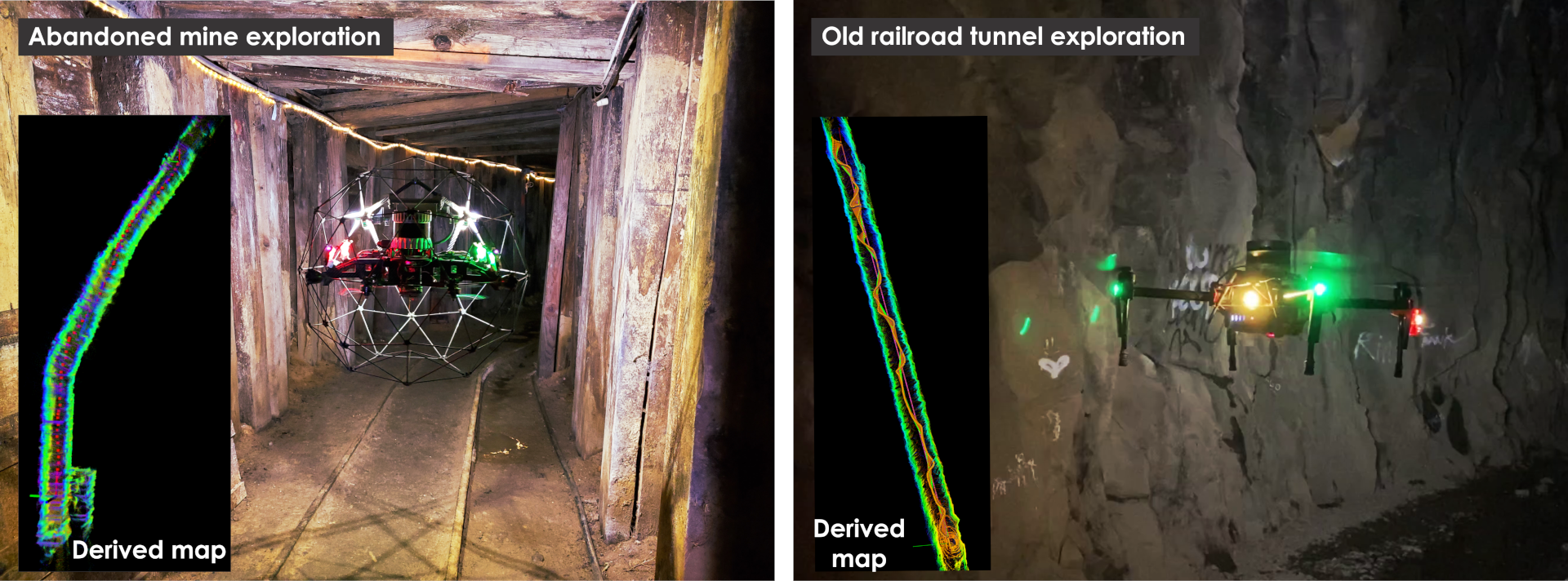Motion Primitives-based Path Planning for Agile Subterranean Exploration using Aerial Robots
Mihir Dharmadhikari1, Tung Dang2, Lukas Solanka3, Johannes Loje3, Huan Nguyen2, Nikhil Khedekar2, Kostas Alexis2
1 BITS Pilani
1 Autonomous Robots Lab, University of Nevada, Reno
2 Flyability SA
1 Autonomous Robots Lab, University of Nevada, Reno
2 Flyability SA
Abstract: This work presents a new path planning strategy that enables the fast and agile exploration of subterranean environments using aerial robots. Underground settings often present simultaneously very large scale and extremely narrow geometries, while micro aerial vehicles have limited battery life. In response to this fact, the proposed method is organized around a tailored to the problem bifurcated local and global planning architecture. The local planner operates in a sliding window of volume around the robot and employs motion primitives to rapidly identify high-speed admissible paths that search the configuration space, while exploiting the flight dynamics of small aerial robots. At the same time, a sparse global graph of the environment is incrementally built and that allows the robot to find a return-to-home path or re-position itself towards previously detected frontiers of the exploration space when a local dead-end situation is encountered. This planning methodology for fast and agile exploration utilizes a computationally lightweight volumetric representation of the environment based on which the exploration gain is calculated and the safety of the paths is guaranteed. The proposed algorithm is field-verified in a collection of real-life deployments inside both active and abandoned underground mines, old railroad tunnels and building corridors. The presented field experiments utilize both a 0.55m-wide collision-tolerant flying robot, as well as a more traditional quadrotor platform. While flying fully autonomously, the systems present exploration speeds up to 2m/s and navigate constrained settings as narrow as 0.8m in width.
Publication
Under Review
Video Results
|
Indicative Underground Mine Aerial Robotic Exploration
|
Indicative Underground Mine Legged Robot Exploration
|
Code
Coming soon!
Dataset
Datasets for Subterranean Exploration
Relevant Downloads
- Coming soon!
